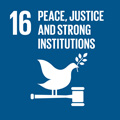- Docente: Giorgio Spedicato
- Credits: 6
- SSD: IUS/04
- Language: English
- Teaching Mode: In-person learning (entirely or partially)
- Campus: Bologna
-
Corso:
Second cycle degree programme (LM) in
Philology, Literature and Classical Tradition (cod. 9070)
Also valid for Second cycle degree programme (LM) in Legal Studies (cod. 9062)
Second cycle degree programme (LM) in Italian Studies, European Literary Cultures, Linguistics (cod. 9220)
Second cycle degree programme (LM) in Digital Humanities and Digital Knowledge (cod. 9224)
Learning outcomes
At the end of the course, the student knows the main legal principles - as well as the basic national, EU or international provisions - on copyright and related rights in the digital environment. The student is able to understand how to basically deal with lawful ownership and licensing of copyrighted digital subject-matter.
Course contents
The course is devoted to the fundamental principles of copyright under the international and the EU legal framework. During classes, a number of focus on more specific aspects of the relationship between copyright law and digital technologies will be made.
Syllabus
Class 1: Copyright as Intellectual Property and its economic and social justification.
Class 2: The object of copyright protection: the notion of “work” and its originality. Derivative works. The idea/expression dichotomy.
Class 3: The subject of copyright protection: the author and the creation of the work. The absence of formalities. Works created by employers. Works created by multiple authors (joint and collective works). Non-human authorship (works created by Artificial Intelligence Systems).
Class 4: Difference between moral rights and economic rights. The duration of copyright. Moral rights: the right of paternity and the right of integrity.
Class 5: Economic rights: copy-related rights (rights of reproduction and distribution). The principle of exhaustion and its applicability to the digital environment. Rights of rental and lending.
Class 6: Economic rights: non-copy-related rights (right of public displaying and right of communication and making available to the public). Linking and embedding of content on the Internet. The right of modification, elaboration and transformation of the work.
Class 7: Rights related to copyright. The sui generis protection of databases.
Class 8: Exceptions and limitations to copyright and the three-step-test.
Class 9: Exceptions and limitations in the digital environment. Digital libraries.
Class 10: Transfer of copyright: assignment and license of rights. The role of the collecting societies.
Readings/Bibliography
For students not attending classes the study of the following text is mandatory:
- P. GOLDSTEIN, B. HUGENHOLTZ, "International Copyright: Principles, Law, and Practice" (Oxford University Press, 2019), chapters 1, 2, 3, 6, 7, 8, 9, 10, 11.
For students attending classes, the relevant texts and materials will be indicated during each class and subsequently uploaded on "Virtuale", the institutional online repository of the University of Bologna (https://virtuale.unibo.it/).
Teaching methods
The course is articulated into lectures in which the teacher will illustrate the fundamental legal principles, through the use of examples and practical cases, also commenting on the relevant legislation and case law, and discussing them with the students.
Due to the technical nature of the subject-matter and the specific legal lexicon, frequency, despite not being mandatory, is strongly advised.
Assessment methods
For both attending and non-attending students, the exam takes place in oral form, and consists of 3-4 open questions on the entire program.
The evaluation of the exam will be carried out taking into account the knowledge of the institutes of copyright law, the ability to analyze the different interpretative guidelines, the ability to make connections between the different parts of the program, the ability to develop critical arguments, the articulation of exposure, the exposure accuracy.
To register for the exam, students need to use the AlmaEsami system. Late registrations (compared to the terms indicated on AlmaEsami) and / or off-list are not allowed.
Only for the first exam following the end of the course, attending students (i.e. students attending at least 75% of the classes) who have the course included in the learning plan for the current academic year will have the chance to take a written exam. In this case the exam will consist of a multiple-choice test of 30 questions, with three possible answers, one of which is correct. The mark is obtained by adding the number of correct answers. The exam is passed with at least 18 correct answers on 30 questions. In case of failure to pass the exam or refusal to accept the mark, the student will be required to take the oral exam on the entire program - and in the manner indicated above - in one of the subsequent exams.
Teaching tools
Students who, due to disability or specific learning disorders (DSA), need compensatory tools shall communicate to the teacher their needs so as to be directed to the relevant persons and agree on the adoption of the most appropriate measures.
Office hours
See the website of Giorgio Spedicato
SDGs



This teaching activity contributes to the achievement of the Sustainable Development Goals of the UN 2030 Agenda.
